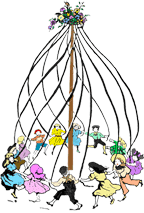Margaret McCullough Forster
Margaret McCullough Forster was born of well to do parents, May 26th, 1828 in Glasgow, Scotland. When she was a mere child her father died leaving her mother with two small children, her brother died quite young. Shortly after the death of her father her mother married again. When she was six year of age her mother passed away leaving her in the care of her stepfather. He soon married and being raised with stepparents she did not learn much about her own relatives, as they did not seem to want to tell her much about them. At the age of eighteen she was married to Ralph Forster, they lived in Scotland a while and then moved to Durham, England. It was here they first heard the Mormon Elders and after attending their meetings they embraced the gospel and like all other saints who embraced the gospel in early day they desired to gather with the Saints to Zion.
They left their native land March 12th, 1854, sailing from Liverpool on the ship called John M. Wood, was six week on the water, seasick all the way. When they arrived at New Orleans they had to remain there till they could get the wagons and oxen ready so they could start their march across the plains. Milo Anderson was put in captain of the company. When they began to load they found they had to leave a great many things that they was desirous of bringing as there was not room in the wagons. When ready to start the captain said the sister would have to take turns in riding but the sister that was in the wagon with my mother was sick, so my mother walked all the way so this sister could ride.
When they arrived in Salt Lake City my father obtained work at Faramay Little sawmill in Big Cottonwood Canyon. This was a new experience for my mother to live among the timbers. She was one that made the best of what she had and not having chairs she obtained timber from the mills and made stools to sit on. She also found a piece of hard wood and made a rolling pin, which we still use! She was out to the big 24th of July celebration held in Big Cottonwood Canyon when the word came that Johnson’s army was coming. And was among the number when President Brigham Young told them to leave and go South and leave what they had. She and her family got as far as Spanish Fork and while there word came that peace was restored and they could return to their humble home. This she was very grateful, as she had been very sick while at Spanish Fork, owing to the bad water they had to use.
Returning to their humble home in Cottonwood, they remained a short time. In the spring of 1859, she and her family moved to Cache Valley and settled in Mendon. Here they lived very close together on account of the Indians being very hostile, later they moved out on city lots and build the town. She was one of the early pioneers of Mendon and passed through all the hardships of early days. When my father was called to go back to the states to help bring the emigrants my mother milked cows and made butter to support her self and small children. And during the time the grasshoppers was so bad she with others went out to fight them. During the long winter evening she would sit by the light of the fire or a tallow candle she had made and sew or knit for her family and in the early day they would gather wild fruit and dry for their winter use. They would also have to wash their wool, color their yarn and get it wove into cloth to provide clothes for their family.
She was a member of the first Relief Society organized in Mendon and being a good nurse she would go and help those in need. She with other sisters used to go gleaning wheat. She passed away May 30th, 1898.1
![]()
![]()
1. Margaret McCullough Forster, Jemima R. Forster, May 1933, unpublished manuscript.
